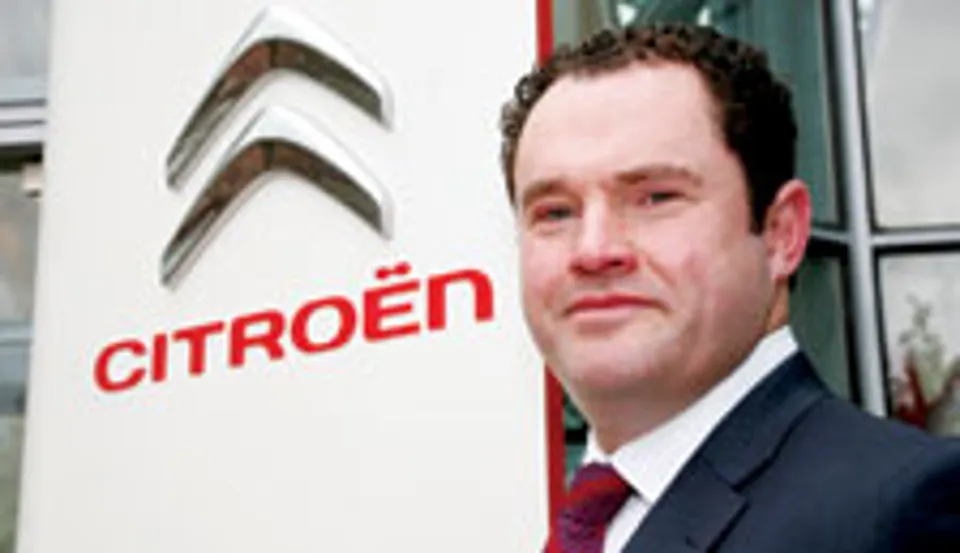Citroën has outlined modest fleet growth aspirations over the next two years, but has challenged the actions of some rival manufacturers which it accuses of exploiting the sterling-euro exchange rate to “aggressively” bring in cheaper cars, many of which are ending up as pre-registered or short-term rental vehicles.
The company is targeting a 4% fleet share in cars and 8% in vans by the end of 2015, up from 3.60% and 7.67% respectively in 2012.
Martin Hamill, fleet director at Citroën, said: “We’ve got to be realistic so we’re not drawn into finding a quick fix because ultimately that has more of a negative impact than a positive one.
“You fight long and hard to persuade people that you’re being careful and disciplined with your approach to the market and you can undo all that good work within a six-month period if you start to pump lots of cars into fast churn rental.”
Controlled presence
Hamill plans to increase Citroën’s rental volumes from 2,134 cars and 672 vans in 2012 to 3,000 cars and 1,000 vans this year, which he says is a “miniscule” percentage of the overall rental market.
He said: “We do want to continue to have a controlled presence within rental because I believe it give us two benefits. Firstly, we get early road presence with new cars and secondly we have the advantage of giving people a real world demo experience.
“That’s an important aspect to challenge people’s perception of where Citroën is today.”
His boss, Citroën UK managing director Linda Jackson, believes rival manufacturers will continue to be “more aggressive” in the UK, using the exchange rate to bring in cars more cheaply that will end up either as pre-registrations or short-term rental sales.
“Citroën’s priorities this year are France, Germany and the UK,” she said. “There’s pressure to move forward but we want to do proper retail business not heavy registrations. That’s not good for us or our dealers. It’s about controlled sustainable growth.”
Citroën’s premium DS line is already helping to change perceptions and has attracted new user-choosers to the brand with DS fleet sales 37% higher last year than originally forecast.
DS5 hybrid sales are ahead of expectations although a delay in launching DS5 – a January 2012 launch was planned but it actually took place in April 2012 – has meant overall sales are below the original forecast.
Hamill intends to increase DS5 sales to 2,326 this year (up from 1,454 last year) with 1,826 going to fleet (compared to 1,288 last year). A key part of lifting DS5 sales is giving potential fleet customers the chance of a 24-hour test drive. The initiative has been running since September and so far nearly 1,000 have taken place.
Dealers now recognise that it is worth offering a demonstrator to a fleet customer even if they are funded by a leasing company, according to Hamill.
“If the customer walks away from that dealership feeling that they were treated well there is an opportunity for an affinity sale,” he said.
Citroën has “invested a lot of time and money” in the dealer network, introducing a specific set of sales and aftersales standards.
SME penetration was “a real success story” last year, according to Hamill, with contract hire sales up 18% and non-contract hire up more than 20%.
Jackson added: “SME will be a key growth opportunity for us this year. New product will help our growth.
“However, large fleet is dominated by leasing companies and by some manufacturers and we don’t have the infrastructure for this.”
The latest servicing initiative to be rolled out is Citroën Service Racing. Inspired by the Citroën rally team, it sees more than one technician working on an individual car to service it in less than an hour.
“That’s important because business drivers don’t like hanging around while their car is being serviced,” Hamill said.
He also expects the forthcoming DS3 Cabrio to attract fleet buyers.
“It’s going to be a retail-orientated car but we still think we could do about 1,000 fleet sales this year,” Hamill added.
Citroën will also be launching special editions of the DS3, C3, C3 Picasso and C4 while the new C4 Picasso is due later this year.
On the van side, there will be an electric Berlingo in the second half of the year.
Hamill expects Citroën’s recently launched three-cylinder petrol engines on the C3 and DS3 to do particularly well in salary sacrifice where Citroen has already experienced success.
“The products we build now are far removed from where we were three years ago,” he added.



















Login to comment
Comments
No comments have been made yet.